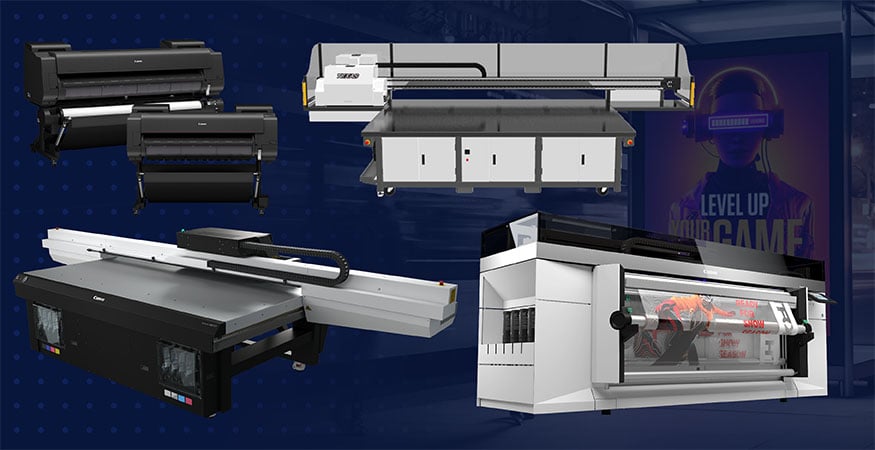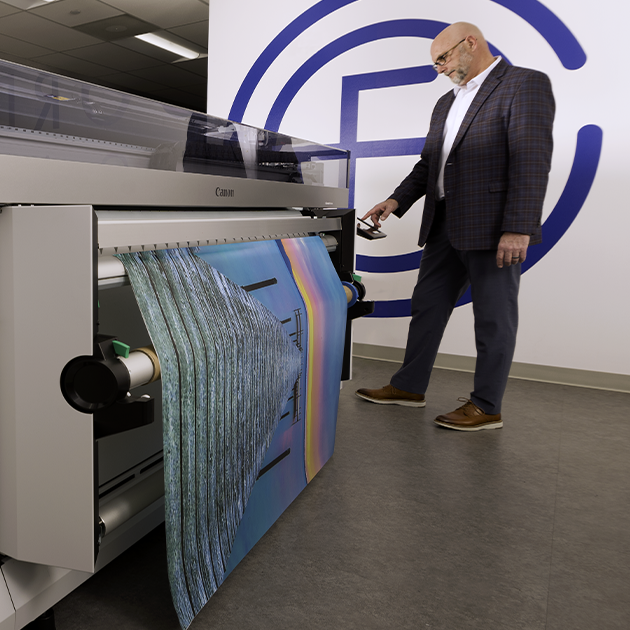In today's fast-paced digital age, the commercial print industry is constantly evolving to meet the changing needs of businesses. To thrive in this dynamic landscape, commercial print businesses must adapt and embrace change. By leveraging personalized printing options, integrating print with digital channels and staying ahead of technological advancements, commercial printers can not only survive but thrive well into the future.
Let’s discuss the following topics to gain a greater understanding of what may be in store for the commercial printing industry:
If you work for one of the 25,000 commercial printing companies in the United States, this article was written for you.
Impact of Digitalization on Commercial Printing
The commercial print industry is undergoing a significant transformation due to the impact of digitalization. With the rise of digital technology, traditional printing methods are being replaced by more efficient and cost-effective digital printing techniques. This shift has resulted in increased automation, faster turnaround times and improved print quality.
Digitalization has also enabled businesses to offer personalized and customized printing options. With the use of variable data printing, commercial printers can now cater to the individual needs and preferences of their customers. This level of personalization has become increasingly important in today's market, where consumers expect tailored experiences.
Furthermore, digitalization has allowed for the integration of print with other digital channels. Commercial printers are now able to offer multi-channel marketing solutions, combining print with online platforms and social media. This integration has opened up new opportunities for businesses to reach their target audience more effectively and engage customers across different media.
Overall, the impact of digitalization on the commercial print industry has been profound. It has revolutionized printing processes, expanded the range of services offered and enhanced the customer experience.
Challenges Faced by Commercial Printers
While digitalization has brought numerous benefits to the commercial print industry, it has also presented challenges for printers. One of the main challenges is the decline in demand for traditional print materials. With the shift towards digital media, businesses are increasingly relying on digital advertising and communication channels, reducing the need for printed materials.
Another challenge faced by commercial printers is the increasing competition in the market. As the industry becomes more digitalized, barriers to entry have lowered, allowing new players to enter the market easily. This has led to a crowded marketplace, making it harder for established printers to differentiate themselves.
Additionally, commercial printers need to keep up with rapidly changing technology to stay competitive. Investing in state-of-the-art printing equipment and software can be costly, especially for small businesses. However, failing to adapt to new technologies can result in decreased efficiency and inferior print quality.
Despite these challenges, commercial printers have the opportunity to diversify their services and adapt to the changing landscape of the industry.
Innovative Solutions for Commercial Printing Businesses
To overcome the challenges faced by the commercial print industry, businesses need to embrace innovative solutions. One such solution is diversifying their services. Commercial printers can expand their offerings beyond traditional print materials and provide additional services such as graphic design, website development and digital marketing. By becoming a one-stop-shop for all marketing needs, printers can differentiate themselves from competitors and offer added value to their customers.
Another innovative solution is investing in advanced printing technologies. By staying up-to-date with the latest equipment and software, commercial printers can improve efficiency, reduce costs and enhance print quality.
For instance, Canon’s large format printers are designed to deliver powerful wide-format images with an extended color gamut, superior color consistency, reduced ink consumption, immediate post-processing capabilities and excellent durability for indoor and outdoor applications.
Some of their latest models include:
- Colorado-M Series
- Arizona Series
- DigiTech Texas LT/X2 Series
- imagePROGRAF GF Series
Wondering which model is best for your commercial printing business? Check out our interactive product catalog & selection tool to find the device that will meet your needs.
In addition, leasing large equipment has become a popular option that is designed to reduce the impact of equipment obsolescence and encourage more predictable payments.
Strategies for Standing Out in a Competitive Market
In a competitive market, commercial printers need to develop strategies to stand out from their competitors. Here are some effective strategies to consider:
- Focus on niche markets: Rather than trying to cater to everyone, identify specific industries or target markets that can benefit from your printing services. By specializing in a niche, you can position yourself as an expert and attract customers who value your expertise.
- Offer exceptional customer service: Providing excellent customer service can set you apart from the competition. Respond promptly to inquiries, communicate clearly with customers and go the extra mile to exceed their expectations. Building strong relationships with your clients can lead to repeat business and positive word-of-mouth referrals.
- Invest in marketing and branding: Develop a strong brand identity and invest in marketing efforts to increase awareness of your printing business. Utilize both online and offline channels to reach your target audience. Showcase your portfolio, highlight your unique selling points and demonstrate the value you can provide to customers.
- Embrace technology and innovation: Stay ahead of the curve by adopting new technologies and innovative printing techniques. By offering cutting-edge services, you can attract customers who are looking for modern and efficient printing solutions.
- Build strategic partnerships: Collaborate with complementary businesses to expand your offerings and reach a wider audience. Partner with Managed Print providers, graphic designers, marketing agencies, or event planners to provide comprehensive solutions. By leveraging each other's expertise, you can create mutually beneficial partnerships.
By implementing these strategies, commercial printers can differentiate themselves in a competitive market and position themselves for long-term success.
Searching for the latest options in production and large format printing? Contact the experts at Gordon Flesch Company and discuss how to level up your creativity with advanced technology and business processes.










